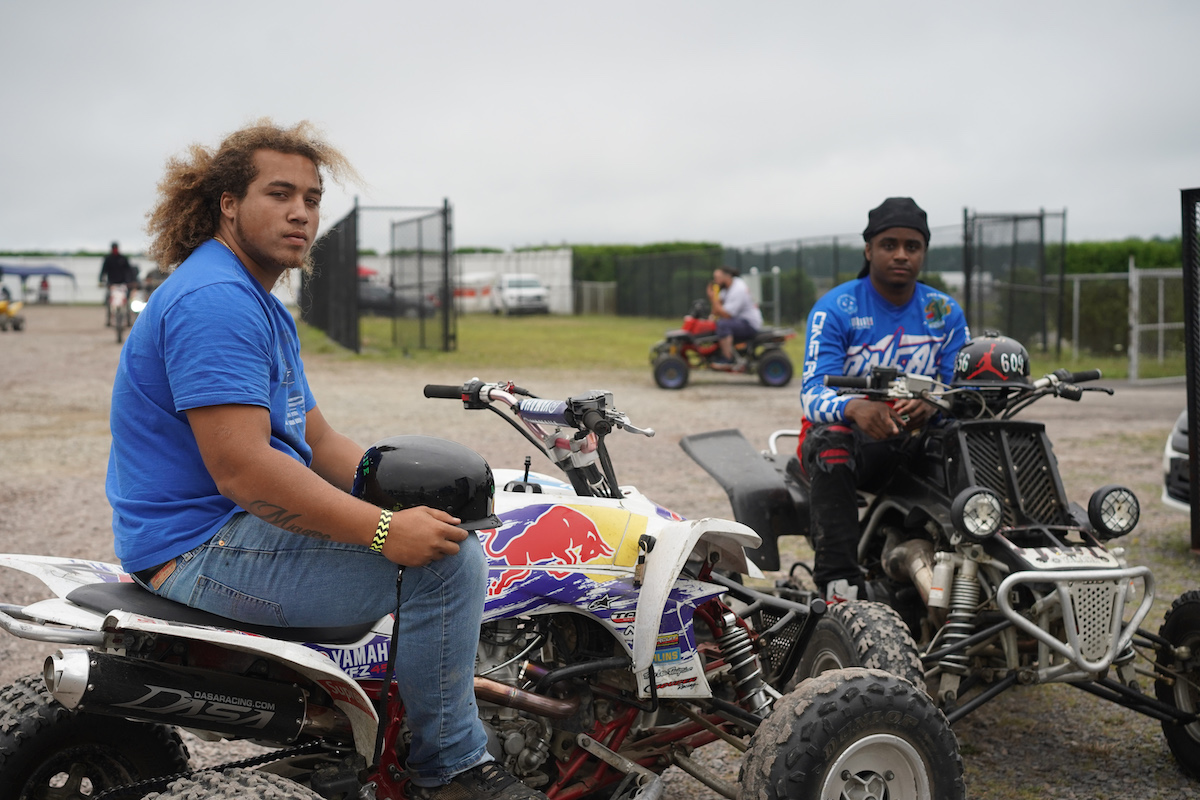How to build a multimedia sports feature for the New York Times
Urban dirt biking won’t be competing with the popularity of baseball or basketball any time soon, but the sport has gained serious traction in metropolitan areas over the last few decades. Built on risk and reward, the illegal sport known more commonly as “bike life” has become a cultural flashpoint, inspiring an underground community while challenging inner-city law enforcement.
The combination of sports and culture was also just the kind of story Tyler Blint-Welsh was looking for. The 2019 Northeastern School of Journalism graduate and Brooklyn native was working with the New York Times metro desk on a Reston Fellowship in the summer of 2018 when the story came his way. A few days later, the young reporter decided to make the multi-hour trek to check out one of the metro area’s largest annual bike life gatherings, turning his written, photo and video reporting into a multimedia feature that ran online and in print.
We caught up with Blint-Welsh to discuss the anatomy of his first New York Times multimedia feature—from ideation to publication—and the importance of non-traditional sports coverage for the future of sports journalism.

How did your bike life story come about?
For most of my stories at the metro desk, I was out reporting and coming back [to the office].
This time, one of the other reporters passed along that there was this event going on, a dirt bike ride of some kind. She just had an Eventbrite link and had the contact link of Benjamin Charles, the guy organizing it.
I hit him up, and when one number didn’t work, I texted and Instagrammed him. Eventually, we talked on the phone and he told me about the event and that there would be riders from all over at the ride.
I went down to this event in the Poconos with bikers from all different states—Maryland, Connecticut, Virginia, Ohio. I just realized my story was worthwhile, when I saw this culture and the intensity of the passion around it.

How did you pitch it?
I talked to my editor saying that I wanted to do a photo essay and a video about this dirt bike event. I didn’t really know that much beyond that at the time.
My editor didn’t see the news value, I guess she didn’t see the point of it. For the next week, I just asked her every other day until the day before I was scheduled to go to the event. She let me do it, but at that point I didn’t even know if they were going to let me publish.

Why multimedia?
Something that I’ve noticed is that a lot of stories lend themselves to multimedia, but the structure of newspapers or the thinking of editors doesn’t let them get there.
This story was going to be one of them. My editor wanted it to be a daily story with no photos. For me, that made no sense. This is dirt bikes and wheelies—that’s super visual. Hearing the editor not think of it as a visual story at all made me believe that it really was a visual story.
It’s a lot to produce, but it’s something that a lot more journalists need to be more valuable to employers these days.

What did you need to pull it off?
I used the Sony A9, a tripod, a mic and my phone to record interviews.
I could rent all gear right at the Times. They have a room that’s the size of my apartment that has four or five aisles of camera gear with a monitor that can get you whatever you need. They have one of those for both photo and video.

How did the story come together?
I met the organizer at 3 a.m. He picked me up in the city to drive the four hours to the event. I didn’t want to sleep and miss my ride, so I stayed up all night. We drove in a big Mercedes sprinter van with his entire family—mom, dad, kids and nephews. He drove kind of erratically, but we got there in one piece.
Since he was the organizer, we were the first to arrive and the last to leave, which gave me about 12 hours of reporting time.
I wasn’t sure what to expect because the light was terrible and it was raining, people weren’t allowed to go on the main road because it was wet and riders were just milling around. Then the weather cleared up and more people ended up coming. It got easier to shoot as the day went on.
From pitch to publish, the whole process was a little over two weeks.

Why is this kind of sports story important?
I think the reason I get turned off by sports writing is that there’s an idea of what sports reporting should be, what it’s supposed to look like. I think stories like bike life that can kind of step outside that mold and show what I feel is a sport and the unique side of people that maybe traditional sports reporting couldn’t have brought out, I think that’s important.
It shows the diversity of sport and the diversity of the people that are engaged with them.
- Behind the Sports Illustrated COVID-19 Issue - April 16, 2020
- How to build a multimedia sports feature for the New York Times - May 28, 2019





